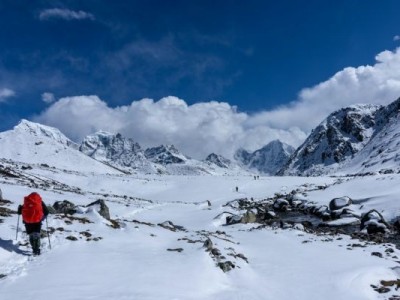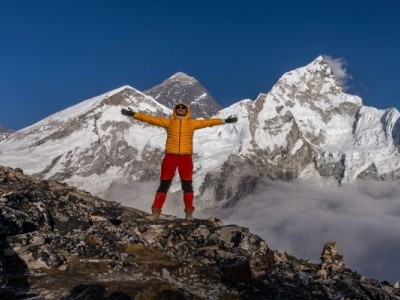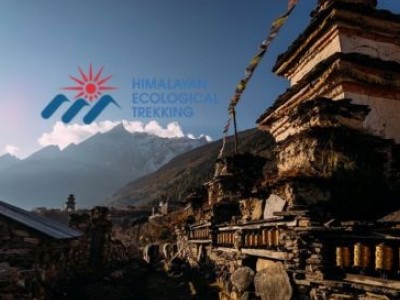The Upper Dolpo Trek difficulty level ranks among Nepal's most demanding high-altitude adventures, presenting trekkers with extreme physical challenges, unpredictable weather conditions, and remote wilderness terrain. This comprehensive guide explores the key obstacles you'll face, from navigating treacherous mountain passes above 5,000 meters to managing altitude sickness in one of the world's most isolated regions. Understanding these Upper Dolpo trekking challenges helps adventurers prepare adequately for this extraordinary Himalayan journey through the mystical landscapes of Nepal's hidden kingdom.
Table of Contents
Introduction to the Upper Dolpo Trek Difficulty
The Upper Dolpo Trek stands as one of Nepal's most formidable trekking routes, earning its reputation through a combination of extreme altitude, technical terrain, and complete isolation from modern civilization. This Upper Dolpo Trek difficulty stems from multiple factors that test even experienced mountaineers to their limits.
Located in the remote northwestern region of Nepal, Upper Dolpo remains largely untouched by modern development. The trek takes you through ancient Tibetan Buddhist villages, across high mountain passes, and into landscapes that few humans have ever witnessed. The difficulty level is classified as "strenuous to extreme," requiring excellent physical fitness, mental resilience, and extensive high-altitude experience.
What makes this trek particularly challenging compared to other Himalayan routes? The Upper Dolpo region sits at consistently high elevations, with most of the trek occurring above 4,000 meters. Trekkers must cross several passes exceeding 5,000 meters, including the notorious Numa La Pass at 5,238 meters. The physical preparation for Upper Dolpo demands months of cardiovascular training, strength building, and altitude acclimatization.
Physical Demands of the Trek

Daily Distance and Endurance Requirements
The Upper Dolpo Trek typically spans 18-21 days, covering approximately 180-220 kilometers of challenging terrain. Daily walking distances range from 4-8 hours, with some days requiring up to 10 hours of continuous trekking. The Upper Dolpo Trek difficulty intensifies due to the sustained nature of these long trekking days.
Your body must maintain endurance levels while carrying a daypack weighing 8-12 kilograms. The constant elevation changes demand exceptional cardiovascular fitness. One day, you might descend 800 meters into a valley, only to climb 1,200 meters the following day to reach the next pass.
Fitness Level Requirements
Successful completion requires a fitness level equivalent to running a half-marathon comfortably. The Dolpo trek physical fitness standards demand cardiovascular endurance for 6-8 hours of continuous activity, combined with exceptional leg strength for navigating steep ascents and descents. Core stability becomes essential for carrying loads over uneven terrain, while mental stamina proves crucial for sustaining effort throughout multi-week expeditions.
Trekkers should complete several practice hikes of 15-20 kilometers while carrying a weighted pack. Mountain hiking experience proves invaluable, as flat-terrain fitness doesn't translate directly to high-altitude trekking performance.
Altitude Challenges and Acclimatization
High Altitude Environment
High altitude trekking in Upper Dolpo presents the most significant challenge for most adventurers. The trek begins at 3,600 meters in Juphal and quickly ascends to elevations where oxygen levels drop to 50-60% of sea level concentrations.
Key altitude milestones include:
- Ringmo Village: 3,640 meters
- Phoksundo Lake: 3,611 meters
- Numa La Pass: 5,238 meters
- Baga La Pass: 5,190 meters
- Saldang Village: 3,770 meters
Altitude Sickness Prevention
Dolpo trek altitude sickness affects approximately 60-70% of trekkers who don't acclimatize properly. Symptoms range from mild headaches and nausea to life-threatening cerebral or pulmonary edema.
Effective acclimatization requires following the "climb high, sleep low" principle while ascending no more than 300-500 meters of sleeping elevation per day above 3,000 meters. Trekkers must take rest days every 1,000 meters of elevation gain and maintain hydration with 3-4 liters of water daily. Avoiding alcohol and sleeping medications during the ascent further reduces altitude sickness risks.
Recognition of severe altitude sickness symptoms remains crucial. Immediate descent becomes necessary if trekkers experience confusion, loss of coordination, severe headaches, or breathing difficulties at rest.
Impact of Weather and Seasons on Trek Difficulty

Seasonal Variations
The difficulty level of the Upper Dolpo Trek varies greatly throughout the year due to weather conditions. The trekking season runs from May to October, with each period presenting unique challenges.
Spring Season (May-June):
- Unpredictable snowfall at high passes
- Muddy trails from melting snow
- Blooming rhododendrons and clear mountain views
- Temperatures ranging from -10°C to 15°C
Summer/Monsoon Season (July-August):
- Limited accessibility due to flight cancellations
- Increased risk of landslides and flooding
- Lush vegetation and flowing waterfalls
- High humidity and afternoon thunderstorms
Autumn Season (September-October):
- Most stable weather conditions
- Clear mountain visibility
- Dry trails and comfortable temperatures
- Temperatures ranging from -5°C to 20°C
Weather-Related Challenges
Sudden weather changes can trap trekkers for days in remote villages. The Upper Dolpo trekking challenges intensify when storms close high passes or make river crossings dangerous. Emergency shelter and extra food supplies become essential safety measures.
Wind speeds at high passes often exceed 60 km/h, creating dangerous conditions for crossing exposed ridges. Morning temperatures regularly drop below -15°C, while afternoon sun can push temperatures above 25°C, requiring versatile layering systems.
Related article: Best Time to Trek Upper Dolpo, Nepal - Spring & Fall Guide
Terrain and Technical Challenges

Terrain Challenges and Navigation
The Upper Dolpo trek route follows ancient trading paths used by yak caravans for centuries. These trails remain unmarked and poorly maintained, requiring excellent navigation skills and local guide expertise.
The challenging terrain includes loose scree slopes requiring careful foot placement, exposed cliff sections with minimal safety margins, and boulder fields demanding advanced route-finding abilities. Trekkers face steep ascents gaining over 1,000 meters in a single day, combined with narrow ridge walks featuring significant exposure to vertical drops.
River Crossings and Water Hazards
Multiple river crossings present significant obstacles, especially during monsoon season or glacial melt periods. Bridges consist of basic log constructions or simple rope spans. Trekkers must navigate fast-flowing glacial streams requiring careful timing, unstable log bridges over deep gorges, and wade crossings through knee-deep frigid water. Flash flood risks during afternoon storms add another layer of complexity to water crossings.
Rocky Terrain and Path Conditions
The geological composition creates challenging walking conditions. Loose limestone and shale require constant attention to avoid slips and falls. Many sections involve scrambling over large boulders or navigating narrow ledges carved into cliff faces.
Preparation and Training Tips
Physical Training Regimen
Physical preparation for Upper Dolpo should begin 4-6 months before departure. A comprehensive training program focuses on cardiovascular development through long-distance hiking with elevation gain, stair climbing with weighted packs, and running or cycling four to five times weekly. Swimming provides excellent low-impact endurance building while reducing joint stress.
Strength training emphasizes squats and lunges for leg power, core strengthening exercises for stability, and pull-ups for upper body endurance. Balance training on unstable surfaces prepares your body for the uneven terrain you'll encounter throughout the trek.
Altitude preparation requires completing several high-altitude treks above 4,000 meters and practicing sleeping at elevation when possible. Some trekkers benefit from altitude training masks during workouts or altitude simulation training facilities.
Essential Gear Selection
Trekking gear for Upper Dolpo requires specialized equipment designed for extreme conditions. The clothing system should include moisture-wicking base layers, insulating mid-layers using down or synthetic materials, and a waterproof shell jacket and pants. Footwear consists of insulated mountaineering boots capable of handling snow and ice. Hand protection requires warm gloves plus backup pairs, while head protection needs both sun protection hats and warm beanies.
Technical equipment centers on a four-season sleeping bag rated to -20°C, a lightweight tent or bivouac shelter, and trekking poles for stability on uneven terrain. Essential safety items include headlamps with backup batteries, water purification systems, and comprehensive first aid kits containing altitude sickness medications.

Related article: Upper Dolpo Trek Packing List: Essential Trekking Gear Guide
Mental Preparation Strategies
Mental preparation proves equally important as physical training. The Upper Dolpo Trek difficulty includes psychological challenges from isolation, discomfort, and pushing personal limits.
Effective mental preparation involves visualization exercises for challenging situations, stress management techniques, and goal-setting with motivation strategies. Experience with multi-day outdoor adventures builds confidence, while meditation or mindfulness practices develop the mental resilience needed for extended wilderness exposure.
Managing Mental and Emotional Toughness
Isolation and Solitude Challenges
The remoteness of Upper Dolpo has a profound psychological impact. Trekkers often experience complete disconnection from modern communication, days without encountering other people, overwhelming silence and vastness, and confrontation with personal limitations and fears.
Motivation and Goal Management
Maintaining motivation during difficult moments requires breaking large goals into daily achievements and focusing on immediate surroundings rather than distant objectives. Successful trekkers celebrate small victories and progress markers while practicing positive self-talk during challenging moments. Most importantly, they remember the privilege of experiencing this unique landscape.
Dealing with Discomfort
Physical discomfort becomes a constant companion. Successful trekkers learn to accept discomfort as part of the experience while distinguishing between manageable pain and dangerous symptoms. They use distraction techniques during difficult sections and find joy in small comforts such as hot tea, dry socks, and stunning views.
Safety Measures and Emergency Planning

Altitude Sickness Management
Altitude sickness during the Dolpo trek must be recognized and treated immediately. Essential safety measures include carrying acetazolamide (Diamox) for prevention, monitoring symptoms using standardized scoring systems, and establishing communication protocols with team members. Planning evacuation routes from each camping location and carrying emergency oxygen or portable altitude chambers provides additional safety margins.
Emergency Response Planning
Remote location demands comprehensive emergency preparedness. Communication systems should include satellite communicators for emergency contact, emergency whistle signals, and established check-in schedules with base support.
Medical considerations require comprehensive first aid training before departure, evacuation insurance with helicopter coverage, and emergency cash reserves for immediate evacuation. Sharing medical history with guides and team members ensures proper response during emergencies.
Guide and Porter Safety
Working with experienced local guides dramatically reduces Upper Dolpo trekking challenges. Professional guides provide route navigation and weather assessment, cultural interpretation and village protocols, emergency response coordination, and load management with pacing strategies.
Related article:Upper Dolpo Trek Cost Guide: Permit Fees & Package Pricing
Frequently Asked Questions
What is the success rate for the Upper Dolpo Trek?
The completion rate varies between 75 85% for properly prepared trekkers. Most failures result from altitude sickness, inadequate physical preparation, or severe weather conditions.
How difficult is Upper Dolpo compared to Everest Base Camp?
Upper Dolpo Trek difficulty exceeds Everest Base Camp significantly. While EBC reaches 5,364 meters, Upper Dolpo involves multiple high passes, technical terrain, and complete isolation from rescue services.
What is the minimum age for the Upper Dolpo Trek?
Most operators require trekkers to be at least 16 years old with extensive high-altitude experience. The high altitude trekking in Upper Dolpo demands mature judgment and physical capability.
Can beginners attempt this trek?
Upper Dolpo is not suitable for beginners. Trekkers should complete several high-altitude treks above 4,500 meters before attempting this route. Previous experience with technical terrain and multi-week expeditions proves essential.
What happens if someone gets seriously sick?
The cost of an emergency helicopter rescue from Upper Dolpo ranges between $5,000 and $15,000. Weather conditions often delay evacuations for several days. Comprehensive insurance coverage remains mandatory.
How much does the Upper Dolpo Trek cost?
Organized treks typically cost $3,500-6,000 USD per person, depending on group size, services included, and seasonal timing. Independent trekking reduces costs but increases logistical complexity and safety risks.
Conclusion
The Upper Dolpo Trek difficulty level stands among the most challenging adventures in the Himalayas, demanding exceptional preparation and unwavering determination. This extraordinary journey through Nepal's remote wilderness rewards those who complete it with life-changing experiences, pristine natural beauty, and profound personal achievement.
Understanding the Upper Dolpo trekking challenges helps adventurers prepare adequately for extreme altitudes, technical terrain, and complete isolation. Success depends on months of dedicated training, proper gear selection, and comprehensive safety planning. Those ready to embrace this ultimate test will discover one of Earth's last untouched frontiers.
Ready to Take on the Challenge?
Don't let the Upper Dolpo Trek difficulty intimidate you – let it inspire your preparation. Contact our experienced trekking specialists today to begin planning your adventure of a lifetime. We'll help you assess your readiness, design a personalized training program, and ensure you have everything needed for a safe, successful expedition.
Book your Upper Dolpo Trek consultation now and join the exclusive group of adventurers who have conquered one of the world's most demanding yet rewarding mountain journeys.
Inquire Now: [email protected]
Expert Consultation: WhatsApp: +977 9851006023 (Bikesh)
.jpg)


